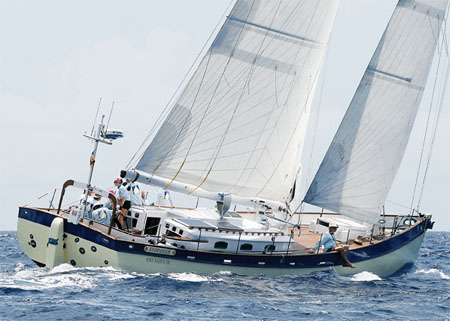Apart from floating on the same sea and being blown by the same winds, people who race across the ocean and those who cruise it seem to live in two parallel worlds. Once discovered, the speed thing is difficult to put down, and most ocean-racing buffs would turn a bit grumpy on a long voyage at 6kt or so. Although this cultural divide is explicable, the paucity of exchange of ideas between these two separate worlds is an unnatural constraint on the development of true, ocean-cruising yachts that are, nonetheless, a real pleasure to sail.
Your average committed speedster might ask why you wouldn’t just put some plastic boxes of food on a raceboat and take it cruising. People do that, but usually as part of a delivery to or from some regatta venue. But here we’re talking more about live-aboard, long-range cruising – for which something with more heft is required.
For an enhanced ocean-cruising yacht a crucial and fundamental decision first has to me made about how the dspl/length ratio is to be pitched and, at the risk of being banned from these pages for ever more, I’d say that some mass in these boats is pretty much what is needed...
To read on simply SIGN up NOW
Take advantage of our very best subscription offer or order a single copy of the October 2011 issue of Seahorse
Online at:
www.seahorse.co.uk/shop/index.php
Or for iPad simply download the Seahorse App at the iTunes store
Below: The 57-foot Irens-designed schooner Farfarer displaces some 28 tonnes – no lightweight but certainly not as heavy as some other world-cruisers of this size. Farfarer’s predecessor Maggie B finished a circumnavigation shortly before being destroyed in a boatyard fire on her return



